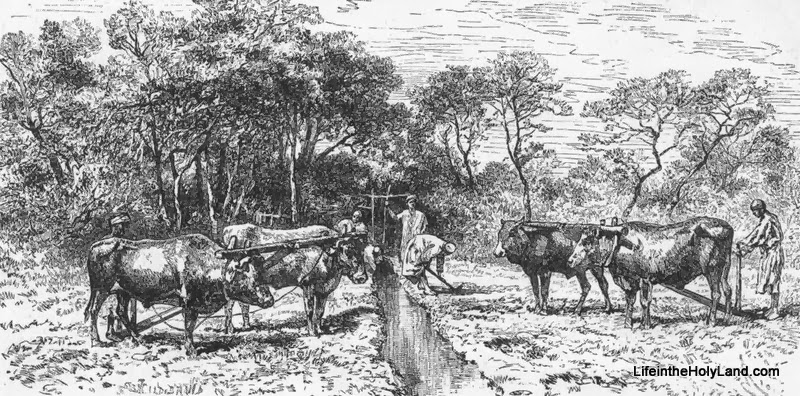(Post by Seth M. Rodriquez)
In 1886, J. Leslie Porter finished a book called Jerusalem, Bethany, and Bethlehem which captured what life was like in Palestine in the mid- to late nineteenth century. It was in some sense a “snapshot” of the Holy Land at that time. In the book, he takes the reader on a journey from Joppa to Jerusalem and then to the surrounding regions. All along the way, he describes what you would have seen if you could have traveled there yourself and explains to you the historical significance of each place. In his own words, he says:
I have not attempted to write a learned treatise on the topography or history of Jerusalem. My task has been far simpler—to produce a book whose pictures, by pen and pencil, may perchance direct the attention of readers of all classes to scenes of absorbing sacred interest.
Things were beginning to change in Palestine during the mid-1800s, but at that point the Holy Land still looked more like the primitive culture it was in biblical times than like the modern country it became in the 1900s. You almost see the transformation taking place in the following excerpt from Porter’s work …
 |
| EGYPTIAN COLONISTS, JOPPA. |
The road from Joppa to Jerusalem is the best in Palestine; in fact it may be said to be the only road in the country, for all others are merely bridle-paths, sometimes more like goat-tracks. The present road, thanks to French influence and money, is fit for wheeled conveyances, though the drive will call forth many a groan from those of delicate frames or weak nerves. But the scenery is fine; and the villages, people, ruins, and historic associations are sufficient to draw away the attention from physical discomfort. At first we wind through gardens of vegetables and groves of fruit-trees. Many imposing houses have recently been built; and we have all around us evidences of active life and reviving prosperity. Colonists from America, Germany, and even from Egypt, have settled here, attracted by a soil of unsurpassed fertility and a grand climate. Nowhere in the world are the orange-groves more luxuriant or the fruit of finer flavour. As we pass along we may notice the Egyptians at work in the fields, with their yokes of oxen and their ploughs so rude and primitive in design that it might be supposed they had come down unchanged from the days of Abraham. The ploughman, too, carries his goad—a weapon apparently better fitted for a lancer than a peaceful husbandman. After examining the size and make of one of those goads, I did not think the story of the sacred historian so very wonderful, that Shamgar, the Israelitish judge of old, should have slain six hundred men with an ox-goad.
To read more of the work, you can see an excerpt on LifeintheHolyLand.com by going here (for a high-resolution image) or here (for a low-resolution image). This image, about 90 other images, and the entire 170 pages of text from Jerusalem, Bethany, and Bethlehem are available here for only $15 (with free shipping). Additional images from the book can be seen here, here, and here (note that images from other historical works are shown on those pages as well).